Apple TV 4K vs. Android TV and NVIDIA Shield TV
Comparing the two most powerful streaming boxes you can buy
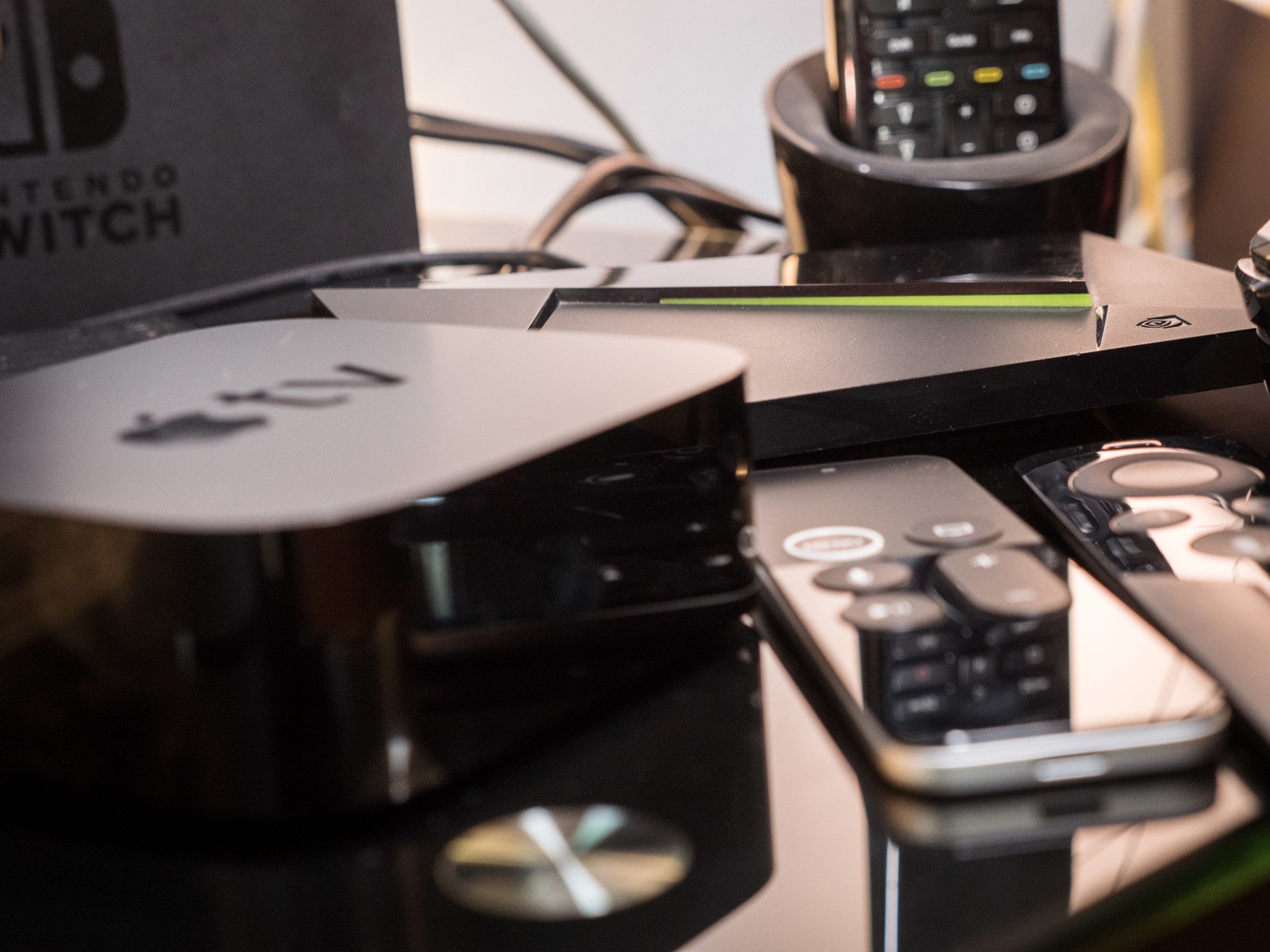
When someone asks me which box they should get if they're serious about cutting the cord, I ask two things. First is how serious they are about it. (That's a slightly more polite way of asking "How much are you willing to spend on a good experience?") The next question is whether they use an iPhone or an Android phone.
And that brings us to the following question: Android TV with NVIDIA Shield TV? Or Apple TV?
Frankly, I think the answer is easy. If you use Android, you should just get Android TV. If you use iOS, grab an Apple TV.
But what if (like me) you live in a mixed household? What if you don't necessarily have that much brand loyalty in the first place?
Well, then. Let's talk.
First things first: When it comes to Android TV (the operating system), we recommend two things. First is Android TV built into the TV itself. Sony does that, for example. That's a great way to get it, and it's ridiculously easy. As for external set-top boxes, NVIDIA Shield TV is the only box we currently recommend. Don't worry about why — it's the only one you should spend money on. Period.
As for Apple TV, we recommend getting Apple TV 4K. It's future-proofed for 4K resolution (duh), and it'll last you the longest because it's the newest in the lineup. And we'd go ahead and spring the extra $20 to get the 64-gigabyte model. You'll never wish you had less storage.
The latest updates, reviews and unmissable series to watch and more!
Yeah, $179 (for NVIDIA Shield) and $199 (for Apple TV 4K) ain't cheap. But that's I asked first just how serious you were, right?
Now let's get into the weeds.
NVIDIA Shield TV vs. Apple TV 4K — specs and hardware
| Category | Apple TV 4K | NVIDIA Shield TV |
|---|---|---|
| Row 0 - Cell 0 | Row 0 - Cell 1 | Row 0 - Cell 2 |
| Price | $179/$199 | $179/$199 |
| Max resolution | 2160p (4K) | 2160p (4K) |
| Operating system | tvOS 12.0 | Android TV (Android 8.0 Oreo) |
| Processor | Apple A10X Fusion | NVIDIA Tegra X1 |
| GPU | Apple A10X Fusion | NVIDIA Maxwell 256-core |
| Storage | 32GB/64GB | 16GB |
| RAM | 3GB | 3GB |
| External storage | No | USB-A |
| Bluetooth | BT 4.0 | BT 4.1-LE |
| Wifi | 802.11ac | 802.11ac |
| Ethernet | Yes | Yes |
| Dolby Atmos | Coming | Yes |
| Dolby Vision | Yes | No |
| HDR 10 | Yes | Yes |
| CEC Control | Yes | Yes |
| Google Assistant | No | Via voice remote Hands-free via gaming controller |
| Siri | Via Siri Remote | No |
| Private listening | Via Bluetooth | Bluetooth/headphone on remote |
| Wireless display | AirPlay | Chromecast |
| See at Amazon | $179/$199 | $179/$199 |
OK. That's how the two devices play out on paper. The things you need to focus on? Apple TV 4K has support for Dolby Vision. NVIDIA Shield TV does not. While I wouldn't quite call lack of Dolby Vision a deal-breaker, I'd rather have it than not. It looks better than HDR 10 (the open-source HDR standard). Why not a deal-breaker, then? It's one of those things that once you see it, you'll know the difference. But not having Dolby Vision doesn't mean you'll have a bad experience.
Both also have a lot of power under the hood. Never mind that NVIDIA Shield is going on three years old. That Tegra X1 inside is more than powerful enough to handle all the streaming video apps you can throw at it — and they all run very quickly.
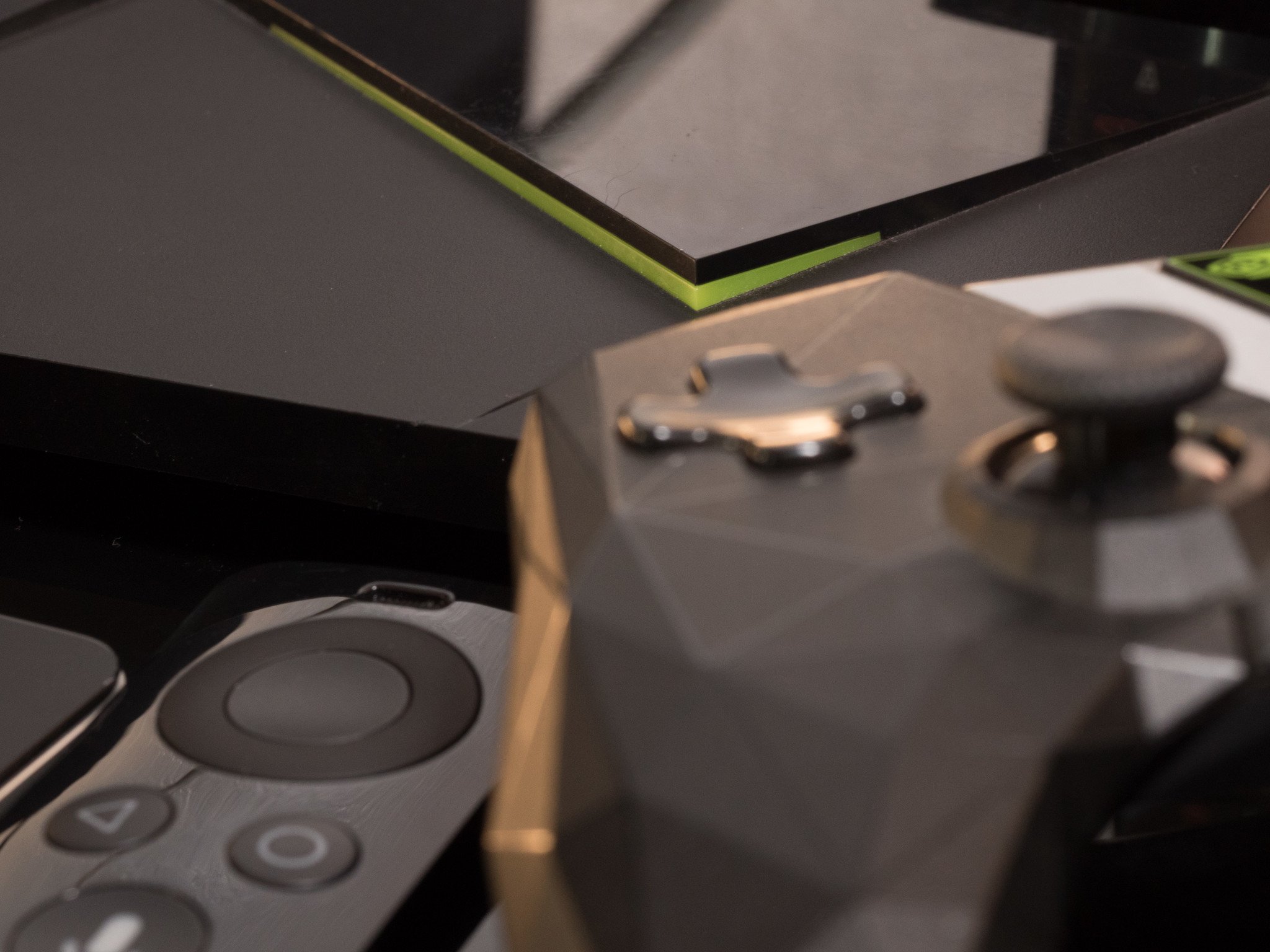
NVIDIA Shield TV — with the Android TV operating system. (Starts at $179 at Amazon
More on NVIDIA Shield TV
Shield also is built for gaming and has access to the full Google Play (and NVIDIA GeForce) catalog. It's not an Xbox or PlayStation, but it's still very good (and far less expensive) and has a sweet little gaming controller that also lets you control everything else on the Shield. In fact, I'd just go ahead and buy the $199 NVIDIA Shield option , which comes with the Shield Gaming Controller. (You can buy it separately for $59 , which is more than just buying it for $20 in the first place.)
One more fun fact about the game controller: It lets you have hands-free access to Google Assistant. It just sits there, waiting to hear you, which is very cool and exactly like what Amazon Alexa does. If you're into Google Assistant, you'll want this.
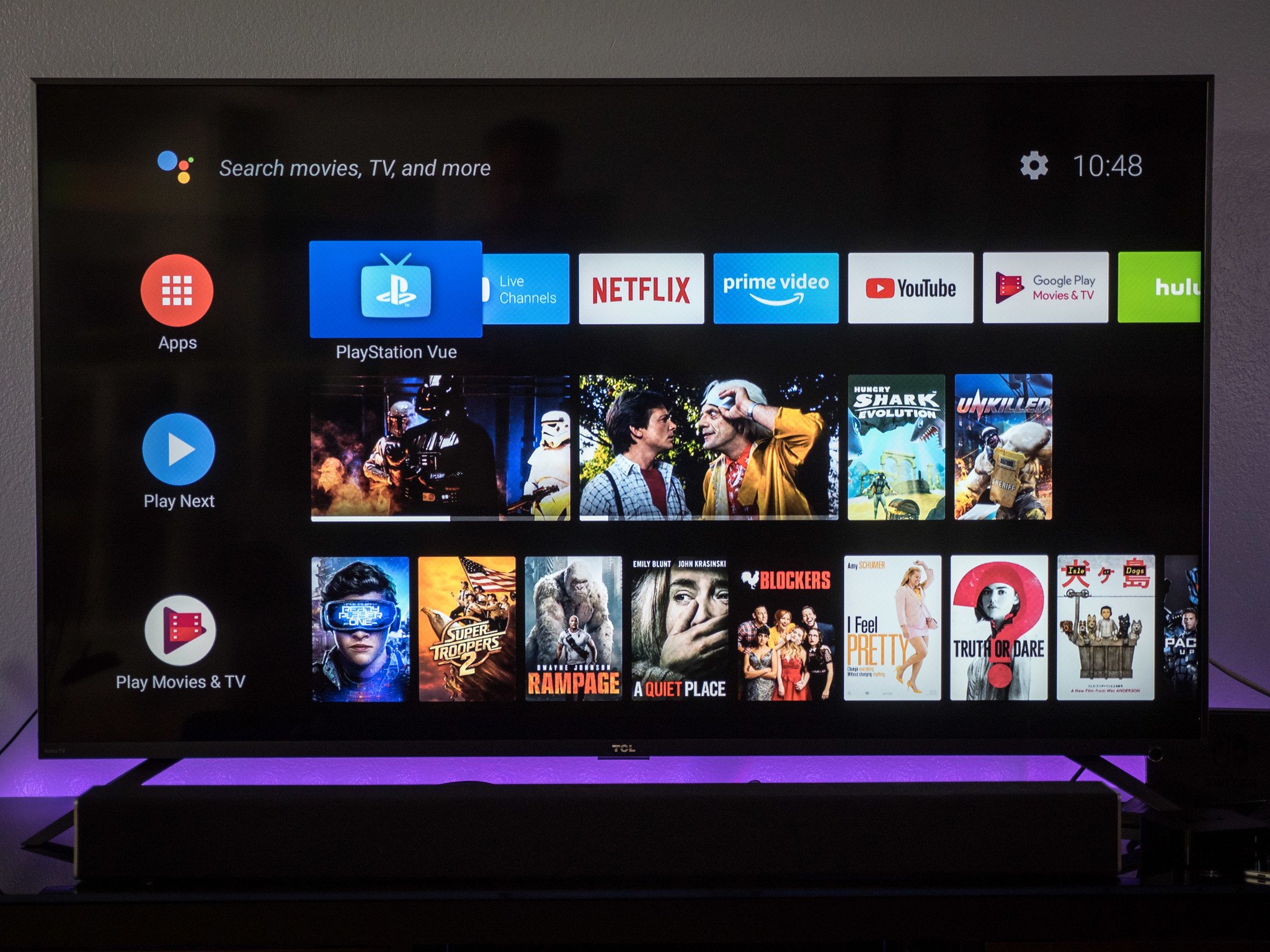
Wait, Phil — What about the Shield Pro?!?!?! OK. Things are about to get needlessly confusing. Yes, there's an NVIDIA Shield Pro. For $300 you get 500GB of built-in storage and a microSD card slot and the game controller, and a better remote control. (More on that in a second.) I wouldn't bother with the Pro, though. You're paying a $100 premium for more storage. Or, you could pay, say, $64 for an external hard drive and have three times as much storage , if that's what you really need. It's your money, though. Spend it wisely.
OK. Back to those remotes. There actually are two versions of the remote control. The Shield Pro comes with the good one. It's rechargeable (via microUSB) and has a headphone jack built in, so you can use it for private listening. The less-expensive "regular" Shield comes with a remote that looks the same but has a replaceable battery and no headphone jack. Both can be used for voice control through Google Assistant. (Not hands-free, though — you have to mash a microphone button.) Both remotes are available for purchase separately, though, so you can ultimately end up with what you want.
NVIDIA Shield TV remains the only Android TV box you should buy.
By the way — both Shield remotes are very usable, with a proper D-pad and good buttons. But they're also pretty small and very thin and you absolutely will lose either of them in a couch cushion at some point. Bet on it.
Shield TV got a major update in June 2018 that brought the operating system up to Android 8.0 Oreo, and along with it a new user interface. I can take it or leave it, but ultimately it's all about running apps.
And Android TV most definitely can run apps — assuming the thing you want to do actually has an app for Android TV. And that's not a given , even in 2018.
One excellent but under-used section of Android TV? The "Live Channels" app. This is an app that aggregates — you guessed it — live channels. If you're using a television that has Android TV as its operating system and you plug in an over-the-air antenna , you'll find those local channels in this app. Same goes for if you're using HDHomerun to share your local channels across multiple devices. And same goes if you're using PlutoTV as your streaming service. It'd be great it more services used this, but it's what I've seen so far.
A few other things of note:
- The Android setup process isn't awful — and they're working to make it even better.
- Android TV's screensavers are pretty good. But you can make them better .
- Every Android TV device has Chromecast built in. That makes it super-easy to take video from your phone or tablet (Android or iOS) or web browser and get it up onto the big screen. It's better than Apple's AirPlay because it's cross-platform, and anecdotally I've found that it just works better.
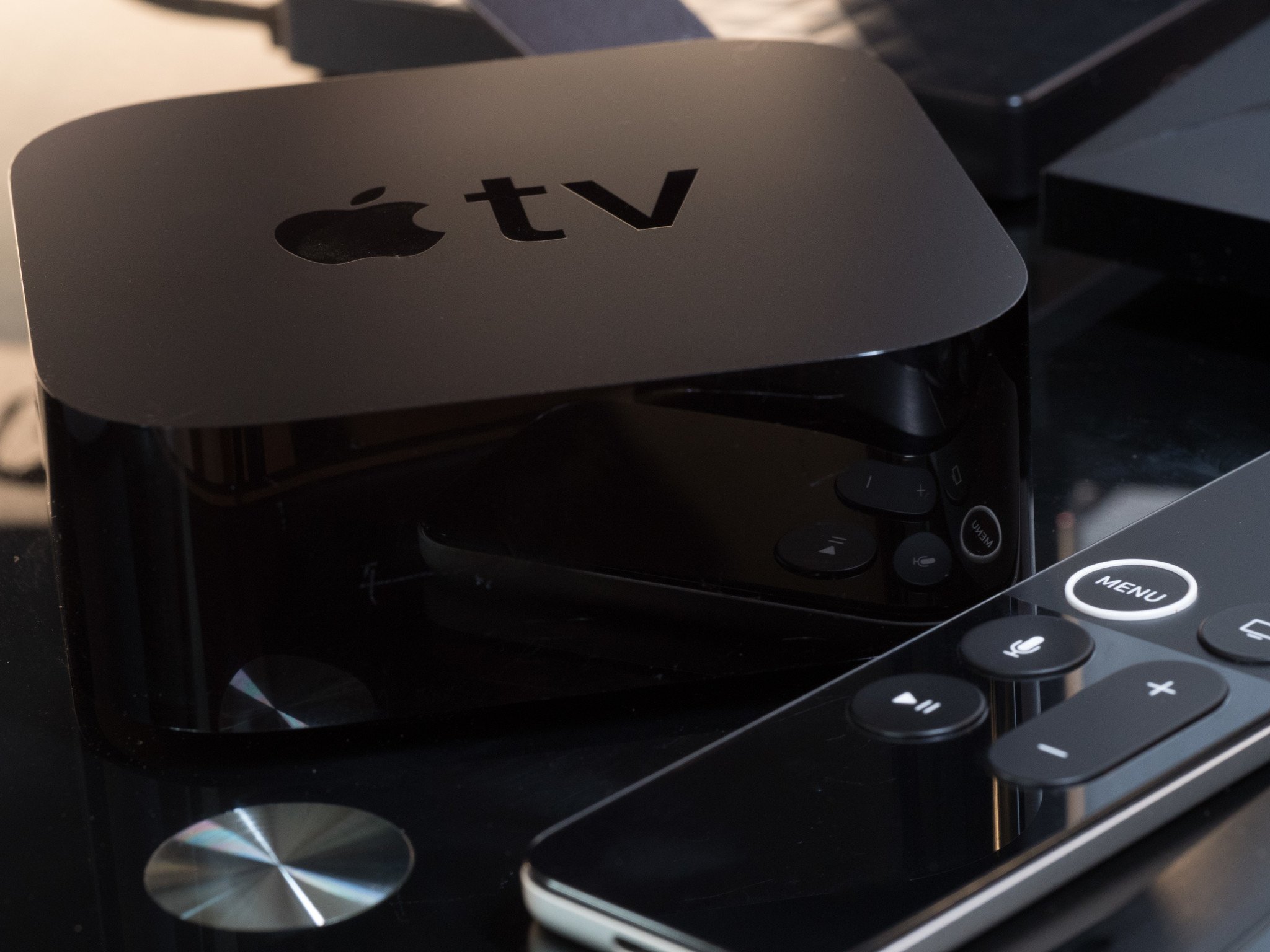
Apple TV 4K. (Starts at $179 at Amazon
More on Apple TV 4K
Apple TV 4K is a much less confusing hardware experience. You have two choices. Either 32 gigabytes of storage, or 64 gigabytes of storage. I'd go ahead and spring the extra $20 for the 64GB. You'll never wish you had less storage — and Apple TV doesn't have an easy way to add more. (Unless you want to get into Network Attached Storage, but that's another thing for another time.)
I'll continue to rail against the Apple TV remote control until the day I die. It is not a good remote control. It's even smaller than the Shield TV remote, but less usable, with a confusing trackpad and a menu button that also acts as a back button, or a home button, depending on how long you press it and whether an app is coded correctly. (Put it this way — I handed it to my daughter and she had to ask me how to use it. That's not good.)
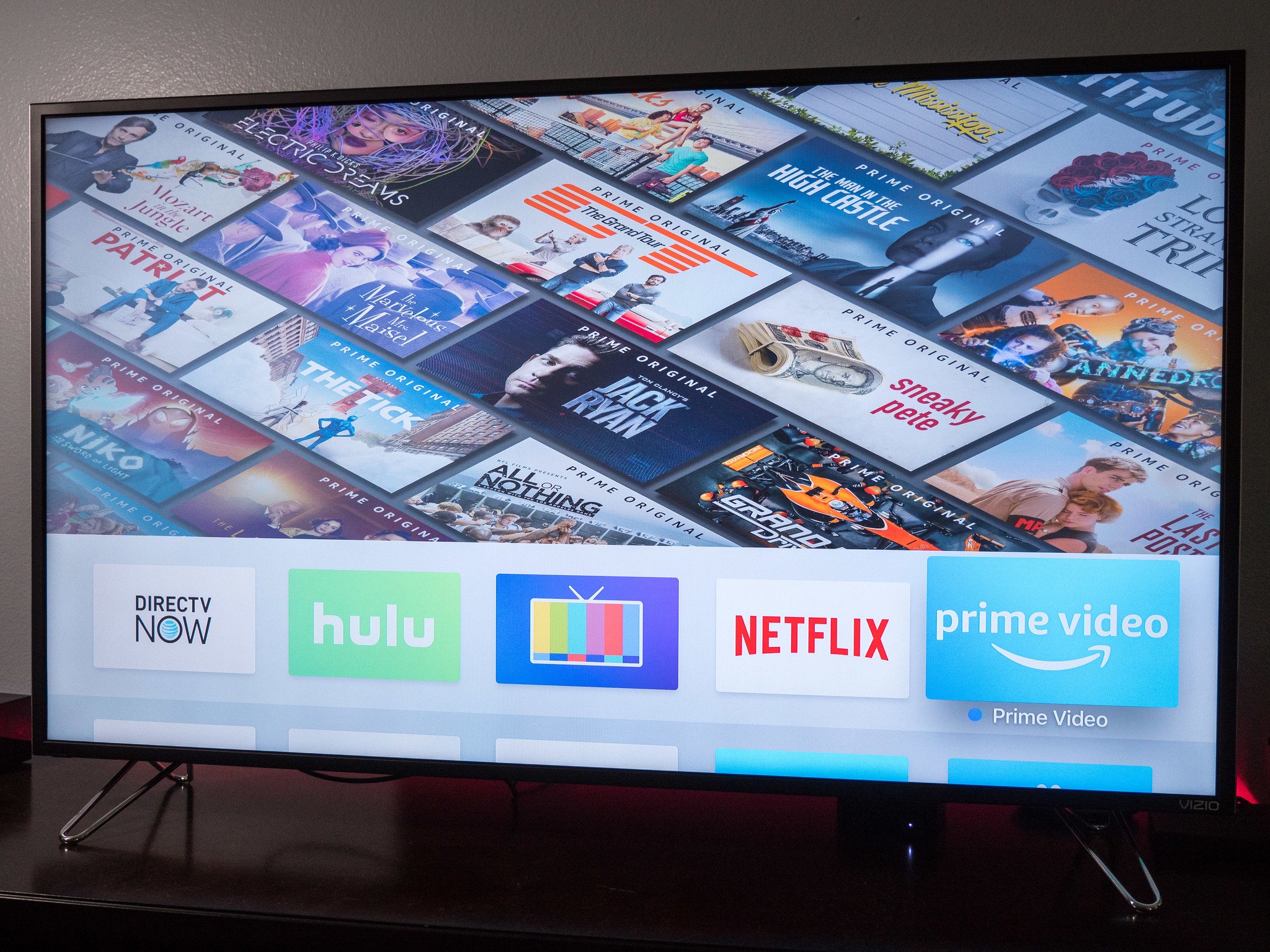
Apple TV probably has the best setup process I've seen — provided that you're also using an iCloud account. And there's a good chance you are, if you're looking at an Apple TV. If that's the case, it'll let you juts copy everything over from your iPhone. Network settings, logins, etc.
The tvOS is boring and bland — you get a bunch of icons. That's it. Launch an app. Do the app thing. And, actually, there's a lot of overkill here. So many built-in apps that I never use. I don't use Apple Music. I don't rely on iTunes. Apple tries to replicate Android TV's "Live Channels" thing with its own "TV" app, to about the same degree of success. Some services play nice with it, allowing their content to show up in one place. Others don't.
My favorite part of Apple TV? The screensavers. They're gorgeous. Better than anyone else's — especially in 4K. I leave the TV on all day just to see them.
The Apple TV experience in a word? Solid.
Then there's AirPlay, Apple's mechanism for getting things from the small screen (your iPhone or iPad or Mac) onto a larger screen. The good news is that it mostly just works, and works pretty well. Tap the icon, select where you want to send it to, and it's there. The bad news? It's a locked ecosystem. If you live in a mixed household with iPhone and Android people, one half of that equation will be locked out. And that's not good for anyone except Apple.
On the other hand, it's that same sort of lock-in that makes Apple TV work so well with the AirPods , so there's that.
So which should you get? Apple TV or Android TV?
My opening statement still stands. If you're all-in on Android, get Android TV. (And, specifically, either a TV with Android TV built in, or the NVIDIA Shield. )
If you're all in on Apple stuff — like, really all in — then get an Apple TV.
That's not to say that Android users can't use Apple TV. For a long time my home setup was (and still is) split. Android TV in the living room, Apple TV in the bedroom. I used an Android phone, and an iPad. So I made it work. (And remember that you can use Chromecast from a lot of iOS apps, too, so it's not like you're totally left out in the cold, like an Android fan in front of an Apple TV.)
Nope, Apple TV is more locked in and locked down. Android TV is opened up a bit more. (And Shield TV has better gaming support.)
The choice, though, is up to you.

